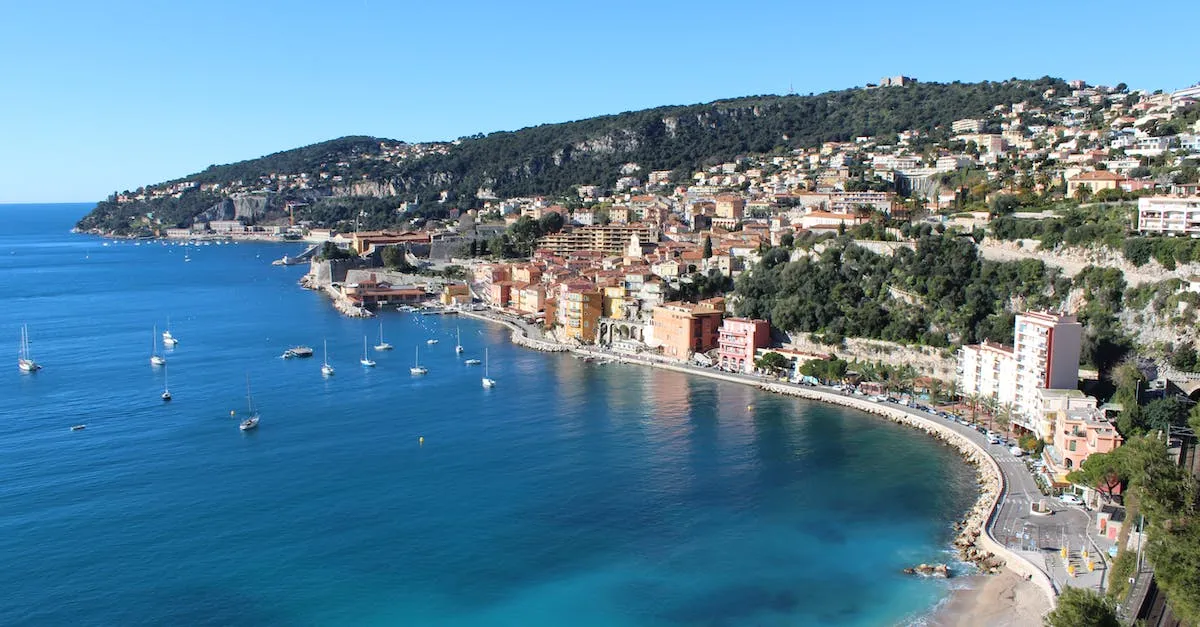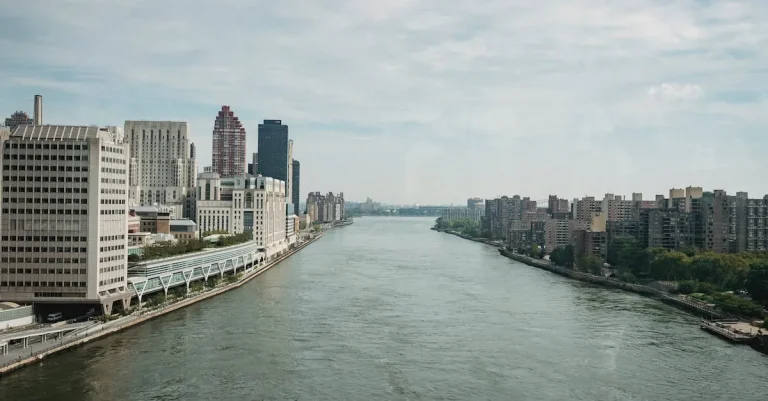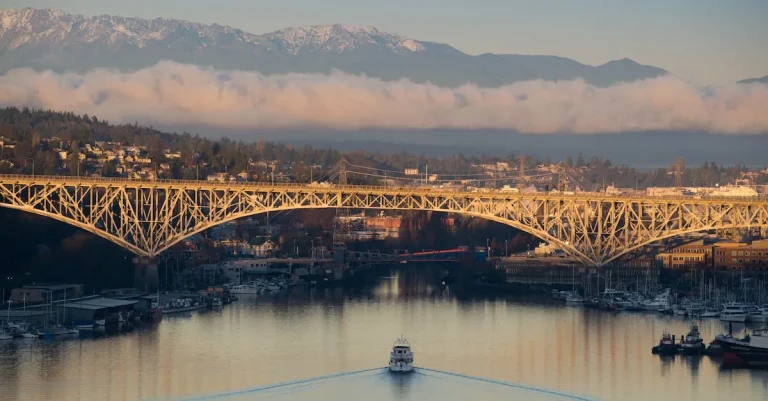What Ocean Surrounds Florida?
Florida, the Sunshine State, is a peninsula surrounded on three sides by water. With miles of beautiful beaches, Florida is a top vacation destination for many across the United States and beyond. But what bodies of water border the state and make its shores prime real estate?
If you’re short on time, here’s a quick answer to your question: The Atlantic Ocean borders Florida to the east and the Gulf of Mexico borders Florida to the west and south.
In this article, we’ll take a closer look at Florida’s geography and go in-depth into the answer to the question: What ocean surrounds Florida? We’ll examine Florida’s location on the map, its unique peninsular shape, and details on both the Atlantic Ocean and the Gulf of Mexico, including how they connect and their key features along Florida’s coast.
Florida’s Geography: A Peninsula Surrounded by Water
Florida’s unique geographical location makes it a popular destination for beachgoers and water enthusiasts. Situated on the southeastern coast of the United States, Florida is a peninsula that is surrounded by water on three sides.
The state is known for its beautiful beaches, diverse marine life, and vibrant coastal communities.
Florida’s Location and Shape
Florida is located in the southeastern part of the United States and is bordered by the states of Georgia and Alabama. It extends into the Atlantic Ocean and the Gulf of Mexico, giving it a strategic position for trade and tourism.
The state’s shape resembles a long, narrow strip, stretching approximately 500 miles from north to south and 160 miles from east to west at its widest point.
The Atlantic Ocean to the East
To the east of Florida lies the vast expanse of the Atlantic Ocean. The coastline along the Atlantic is home to some of the state’s most famous beaches, such as Miami Beach, Daytona Beach, and Palm Beach.
The warm waters of the Atlantic provide opportunities for swimming, surfing, fishing, and boating. The coastal cities along the Atlantic coast are also popular tourist destinations, offering a variety of attractions, entertainment, and nightlife.
The Gulf of Mexico to the West and South
To the west and south of Florida is the Gulf of Mexico, a large body of water that is known for its calm and clear waters. The Gulf coast is dotted with charming coastal towns and cities, including Naples, Sarasota, and Clearwater.
These areas are famous for their pristine beaches, breathtaking sunsets, and abundant marine life. The Gulf of Mexico is a popular spot for activities such as snorkeling, scuba diving, and deep-sea fishing.
The Atlantic Ocean’s Coastline and Features
Florida is a state blessed with beautiful coastlines, and the ocean that surrounds it is none other than the majestic Atlantic Ocean. The Atlantic Ocean is the second-largest ocean in the world, covering approximately 20% of the Earth’s surface.
Its coastline spans across several countries, including the United States. Florida, being a peninsula, boasts an extensive stretch of coastline along the Atlantic.
Beaches Along the Atlantic Coast
The Atlantic Coast of Florida is renowned for its stunning beaches, attracting millions of visitors each year. From the powdery white sands of Miami Beach to the serene shores of Daytona Beach, there is a beach for every preference along this coastline.
The warm, crystal-clear waters of the Atlantic Ocean provide the perfect setting for swimming, snorkeling, and other water activities. The coastal cities of Fort Lauderdale, Palm Beach, and Jacksonville offer a plethora of recreational opportunities, including beachfront parks, beach volleyball courts, and beachside cafes.
One of the most iconic beaches along the Atlantic Coast is Cocoa Beach, located just east of Orlando. Known as the “Surf Capital of the East Coast,” Cocoa Beach is a surfer’s paradise, offering consistent waves and a laid-back beach town atmosphere.
Visitors can also explore the world-famous Kennedy Space Center, located nearby, and witness rocket launches into space.
Major Port Cities on the Atlantic Coast
Florida’s Atlantic Coast is not only known for its beautiful beaches but also for its major port cities. These cities serve as crucial gateways for trade and commerce, contributing significantly to the state’s economy.
One such city is Miami, home to the Port of Miami, which is one of the busiest cruise ports in the world. It serves as a hub for cruise ships, welcoming millions of passengers each year.
Another major port city along the Atlantic Coast is Jacksonville, boasting one of the largest deep-water ports in the Southeastern United States. The Port of Jacksonville handles a diverse range of cargo, including automobiles, containers, and bulk commodities.
Additionally, the port has a strong military presence due to its strategic location.
The Port of Palm Beach, located in Riviera Beach, is another significant port along Florida’s Atlantic Coast. It is primarily known for its role in the cruise industry and handles a substantial amount of cargo as well.
Fun Fact: Did you know that the Atlantic Coast of Florida is home to the longest continuous sidewalk in the world? The Hollywood Beach Broadwalk stretches over 2.5 miles and offers stunning views of the Atlantic Ocean.
Whether you’re looking to relax on pristine beaches, catch some waves, or explore vibrant port cities, Florida’s Atlantic Coast has something to offer for everyone. So pack your sunscreen and get ready to experience the beauty of this oceanic wonder!
The Gulf of Mexico’s Coastline and Features
Florida is surrounded by the Gulf of Mexico, one of the major bodies of water that borders the United States. The Gulf of Mexico is an expansive body of water that stretches from the southeastern coast of the United States, including Florida, all the way to Mexico and the Yucatan Peninsula.
It is the ninth-largest body of water in the world and covers an area of approximately 600,000 square miles.
Beaches Along the Gulf Coast
Florida’s Gulf Coast is renowned for its stunning beaches, which attract millions of visitors each year. From the sugar-white sands of Clearwater Beach to the vibrant shores of South Beach in Miami, the Gulf Coast offers a diverse range of beach experiences for all types of travelers.
The warm waters of the Gulf of Mexico make it an ideal destination for swimming, snorkeling, and other water activities. Whether you’re looking for a family-friendly beach or a secluded spot to relax, the Gulf Coast has something for everyone.
According to a study conducted by BeachMeter, some of the top-rated beaches on Florida’s Gulf Coast include Siesta Key Beach in Sarasota, which has been ranked as the number one beach in the United States multiple times, and St. Pete Beach, known for its powdery white sand and vibrant beachfront atmosphere.
These beaches offer not only breathtaking natural beauty but also a wide range of amenities, including beachfront resorts, restaurants, and water sports facilities.
Major Port Cities on the Gulf Coast
Florida’s Gulf Coast is home to several major port cities that serve as important hubs for trade and tourism. One such city is Tampa, which is located on the western coast of Florida. Tampa Bay is a major port and offers access to the Gulf of Mexico, making it an important center for shipping and commerce.
The city is also known for its vibrant cultural scene, with attractions such as the Tampa Museum of Art and the Florida Aquarium.
Another major port city along the Gulf Coast is Mobile, located in Alabama. Mobile Bay is a natural harbor that provides access to the Gulf of Mexico and serves as an important port for shipping and international trade.
Mobile is also known for its rich history and charming architecture, with attractions such as the USS Alabama Battleship Memorial Park and the historic district of downtown Mobile.
How the Atlantic Ocean and Gulf of Mexico Connect
Florida, known for its beautiful beaches and coastal lifestyle, is surrounded by two major bodies of water – the Atlantic Ocean and the Gulf of Mexico. These two bodies of water connect through several key geographical features, including the Florida Straits and the Strait of Florida.
The Florida Straits
The Florida Straits is a narrow body of water that separates Florida from Cuba. It is approximately 90 miles wide and serves as a gateway between the Atlantic Ocean and the Gulf of Mexico. The warm waters of the Gulf Stream flow through the Florida Straits, creating a unique ecosystem that supports a diverse range of marine life.
The strong currents in this area also make it a popular spot for fishing and boating enthusiasts.
The Gulf Stream, a powerful ocean current, flows northward through the Florida Straits and along the eastern coast of the United States. It plays a crucial role in regulating the climate by transferring warm water from the tropics to higher latitudes.
This current also influences weather patterns and can impact the intensity of hurricanes that form in the Atlantic Ocean.
The Strait of Florida
The Strait of Florida is another important waterway that connects the Atlantic Ocean and the Gulf of Mexico. It is located between the southern tip of Florida and the northern coast of Cuba. The strait is relatively narrow, with a width of about 90 miles, and is known for its strong currents and diverse marine life.
One of the notable features of the Strait of Florida is the Florida Current, which is a part of the Gulf Stream. The Florida Current flows through the strait, carrying warm water from the Gulf of Mexico into the Atlantic Ocean.
This current not only influences the climate but also has a significant impact on the marine ecosystems along the coast of Florida.
The connection between the Atlantic Ocean and the Gulf of Mexico through the Florida Straits and the Strait of Florida has a profound impact on Florida’s coastal environment, economy, and way of life.
It provides opportunities for various recreational activities, supports a thriving fishing industry, and contributes to the overall biodiversity of the region.
Conclusion
With the Atlantic Ocean to the east and the Gulf of Mexico to the west and south, Florida is surrounded by beautiful warm waters and miles of gorgeous beaches. Its unique location and geography make it a true peninsula and contribute to its status as the Sunshine State and a top tourist destination.
Understanding the bodies of water surrounding Florida provides context on the state’s climate, ecosystems, and economy. Whether you’re planning a beach vacation, researching Florida’s ports, or just curious about maps, having a solid grasp on how the Atlantic Ocean and Gulf of Mexico border Florida is key.








